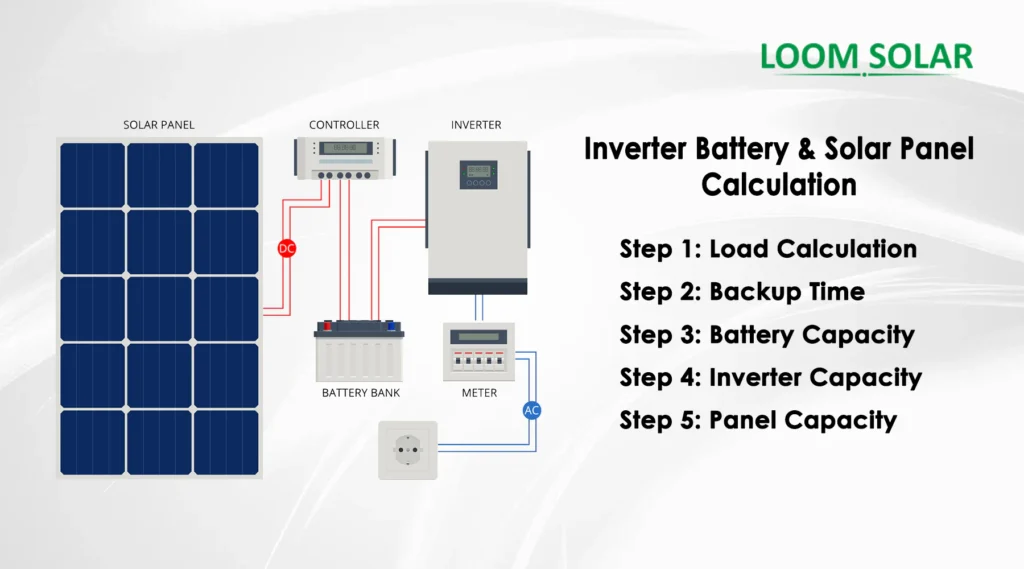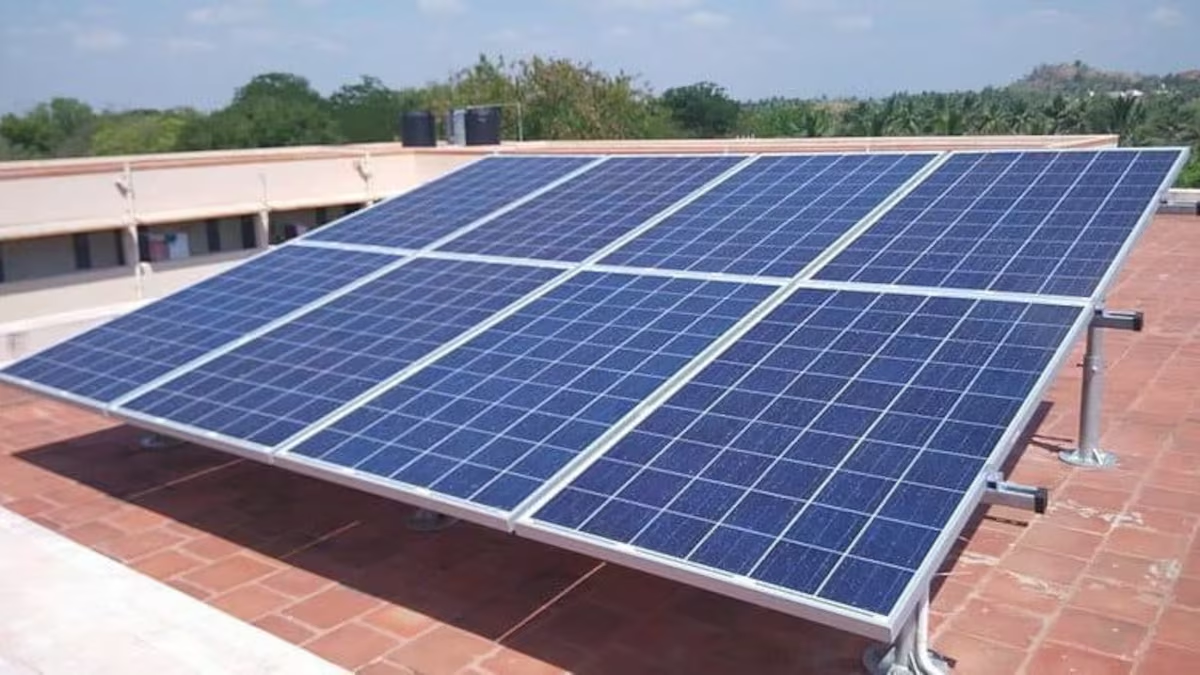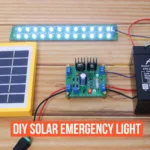Introduction

SRC- Loom Solar
Thinking about installing solar panels at home? You’re not alone. Thousands of Indian families are turning to solar energy to cut electricity bills and reduce dependence on the grid. But the big question remains: How much solar power do you actually need? This guide will show you how to calculate your home’s solar requirements using simple steps and real examples.
Step 1: Know Your Monthly Electricity Usage
To start, you need to understand how much electricity your household uses. Check your last 12 electricity bills. Focus on the kWh (kilowatt-hour) reading. Add them all together and divide by 12.
Example:
- Total for the year: 7,200 kWh
- Average per month: 7,200 ÷ 12 = 600 kWh
Step 2: Find Your Daily Electricity Needs
Now, divide your monthly electricity usage by 30. This gives you a daily estimate.
Example:
- 600 ÷ 30 = 20 kWh per day
Step 3: Know How Much Power a Solar Panel System Produces in India
In Indian weather conditions, a 1 kW solar system produces around 4 kWh per day. This can vary depending on your location, angle of your roof, and sunlight hours.
Also Read Step-by-Step Guide to Installing Rooftop Solar Panels in India
Step 4: Calculate Required Solar System Size
Take your daily requirement and divide it by 4 (the average daily output of 1 kW system).
Example:
- 20 ÷ 4 = 5 kW system required
Step 5: Add 20% Extra for Losses
Solar systems face some energy loss due to temperature, dust, and inverter inefficiency. It’s safe to add 15–20% to your calculation.
Example:
- 5 kW × 1.2 = 6 kW system
Step 6: How Many Solar Panels Do You Need?
Most solar panels used in India are around 330 to 550 watts. Let’s take 330W as a common size.
Example:
- 6,000W ÷ 330W = 18 panels
Step 7: Calculate the Roof Area Required
Each panel takes around 1.6 square meters. Multiply this by the number of panels.
Example:
- 18 × 1.6 = 28.8 square meters of roof space
Make sure your rooftop is shadow-free and preferably south-facing for best results.
Step 8: Think About Battery Backup (Optional)
If your area has frequent power cuts or you want backup power, a solar battery system is useful. It stores excess electricity for use at night or during outages. Look for Lithium-ion solar batteries for better performance and longer life.
Step 9: Use Indian Solar Calculators
To make things easier, you can try India-specific online solar calculators from top solar providers. They help you estimate system size, cost, savings, and subsidy eligibility. Always check your state-specific solar policies too.
Step 10: Don’t Miss Government Subsidies
The Indian government offers financial help under programs like PM Surya Ghar Muft Bijli Yojana and MNRE Rooftop Solar Scheme. These can reduce your total cost by up to 40% depending on the system size.
Important Keywords for Homeowners:
- Solar panel requirement calculator India
- Home solar system sizing
- Rooftop solar guide India
- Residential solar panel installation
- Solar energy needs for home India
Frequently Asked Questions (FAQs)
Q1: What is a good system size for a typical Indian household?
For a family of 4 using 500–600 kWh per month, a 5 to 6 kW system is ideal.
Q2: Can I use solar panels without batteries?
Yes. A grid-tied solar system sends excess power to the grid and works without batteries. But during power cuts, it won’t supply electricity unless you have a hybrid system.
Q3: How much does a 1 kW solar system cost in India?
It ranges between ₹60,000 and ₹80,000 before subsidy. With subsidy, the cost drops significantly.
Q4: Can I upgrade my solar system later?
Yes. You can increase the number of panels, provided your inverter supports more capacity and there is roof space.
Q5: How long will it take to recover my investment?
Most homeowners in India recover their solar investment in 5 to 7 years, depending on electricity rates and subsidies.
Conclusion
Now you know how to calculate how much solar power your home really needs. From checking your electricity bills to estimating roof space and understanding subsidies—every step matters. With rising electricity prices and better government support, now is the perfect time to switch to solar energy in India.
Whether you live in a city flat or a village bungalow, a smart solar investment can make your home self-reliant and eco-friendly.
Author- Ayush












1 thought on “How to Calculate Your Home’s Solar Power Needs in India (2025)”